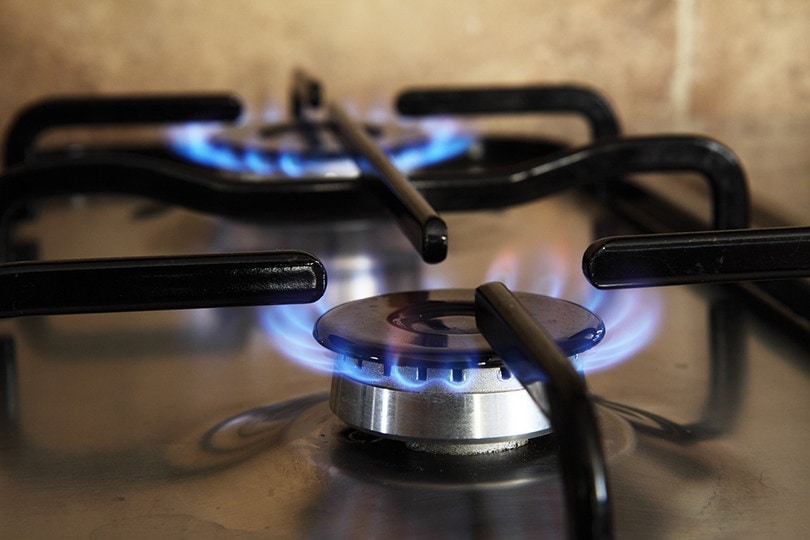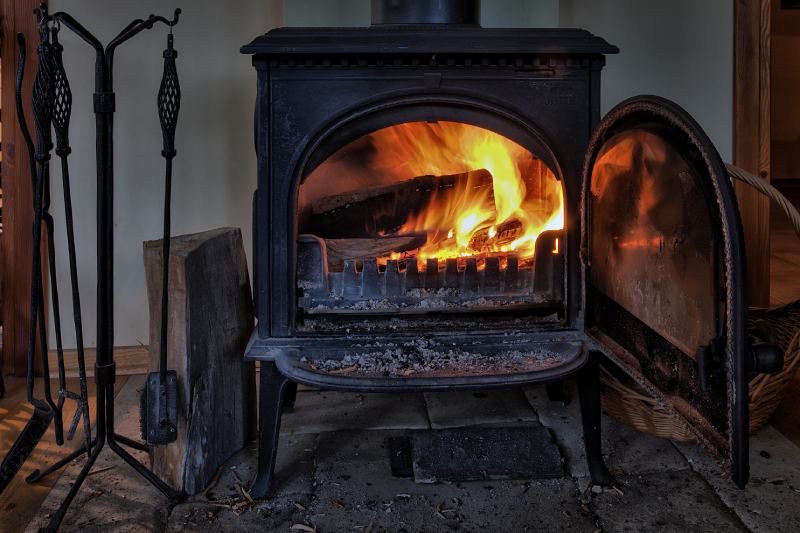Who Invented the Kitchen Stove & When? (History of the Stove)
-

- Last updated:

It is hard to imagine a home without the warmth and comfort of the kitchen, but the modern arrangement with a stove is a surprisingly new concept. The kitchen stove, or range, didn’t appear until the 1700s, the work of designer Francois Cuvilliés. Though crude by today’s standards, the brick appliance started the revolution in indoor cooking that led to the gas and electric units we enjoy today.

History of the Kitchen Stove
Cooking Before Stoves

The concept of a cooking oven has been around since ancient times. Initially, people cooked food over open fires. Over time, they created cooking devices from clay and other natural materials that could sit over the flames.
Qin Dynasty
Early stoves appeared in China during the brief Qin Dynasty (221 B.C.–206 B.C.). An enclosed clay structure contained a fire, and a cooking vessel sat on top. A small opening in the front of the apparatus allowed the user to feed coal and wood. A nearly identical Japanese design, the kamado (“place for the cauldron”), arrived between the 3rd and 6th centuries.
Middle Ages

Europeans were slower to adopt the enclosed fire concept, instead opting for simple raised hearths during the Middle Ages. The waist-high brick-and-mortar constructions would hold a burning fire. Cauldrons hung over the fire to cook food. A hole in the ceiling above the structure allowed smoke to travel up and out of the home. The cook would control the temperature by raising or lowering the cauldron.
With the problem of smoke filling the room, the cooking arrangement eventually moved toward the wall so that it could vent out of a chimney. A fire chamber evolved: a three-sided brick construction with a perforated flat surface. Since cookware could now sit on the cooking surface, pots and pans took the place of cauldrons.
By the end of the Middle Ages, the first heating stove in the historical record appeared. The structure, built in 1492 in Alsace, France, included an enclosed stove and flue consisting entirely of brick and mortar.
Colonial Era

Colonial Era cooking and heating centered around a large brick hearth. Hanging pots would go over a large fire, often on a swinging arm to ease access, and stand-alone pans would sit over burning embers.
Most of these heating areas included a beehive oven, which was a brick baking alcove set into the wall of the hearth. A separate fire would heat the bricks in the beehive oven for several hours. Once the bricks were hot, they would hold the heat long after the fire went out, providing an ideal baking chamber.
1735: The World’s First Kitchen Stove
French architect François de Cuvilliés built the first kitchen stove, as we know it, in 1735. The Castrol stove, or “stew stove,” was a wood-burning masonry stove with metal grates covering fire holes where the user would place their pots and pans. The piece featured an enclosed fire, exhaust, and a stovetop, outlining what would become the modern kitchen appliance.
1795: The Rumford Stove
Many give Benjamin Thompson (aka Count Rumford) credit for the first stove, designed in 1795. The Massachusetts-born scientist was a heating expert, well-known at the time for his Rumford fireplace.
The fireplace had flared walls to project heat into the room and a throat in the flue to increase the updraft and prevent smoke from entering the room. It became wildly popular throughout Europe, and Thomas Jefferson even added several Rumford fireplaces to Monticello.
Like the Castrol stove, the Rumford stove was an enormous brick construction, much too large for many kitchens. A single fire heated several pots hung in stovetop holes, allowing the fire to heat them on all sides.
The innovative aspect of the Rumford stove was the individual heat regulation, where the user could adjust a damper to the ash-pit door. In larger kitchens, the chef’s work became much more efficient. The design, in many ways, helped restaurants shift from mostly roasted dishes to pan-fried made-to-order meals.
The 1800s: The Cast Iron Revolution
With the basis of the modern stove established, kitchen stoves began evolving from masonry to cast iron. The critical change made stoves smaller, more replicable, and more accessible.
The 1830s saw various scaled-down kitchen cast iron stoves, including the Oberlin stove and an air-tight stove from Isaac Orr. Philo Stewart designed the compact wood-burning Oberlin stove in 1834. It featured flue adapters to connect to chimneys, spots for heating water, a roaster, and individual stove holes. The small, efficient design was a massive success, as Stewart sold over 90,000 units.
Meanwhile, Issac Orr had a similar model: an air-tight cast iron stove advertised for its efficiency. H&F Simpson manufactured the stove for Orr in the 1830s and ‘40s, giving many consumers another practical alternative to open hearths. It was a reliable design that could burn wood and coal, a relatively new option for home cooking. The first coal-burning kitchen stove only appeared about ten years prior. It was a cylindrical unit by James Mott from 1833 called the “Baseburner.”
Alternative Fuels

With the challenges of waste and heat management inherent in wood and coal-burning stoves, gas began to gain popularity in the 1800s. James Sharp of England patented the first gas stove in 1826 and opened a production factory for his design 10 years later. Though they were slower to catch on in America, gas utilities eventually emerged to supply homes with fuel. The gas stove, featuring a stovetop and interior oven space, became the predominant style in homes by the 1920s.
- See also: Who Invented the Dishwasher, and When?
The 1900s: Gas vs. Electric

Canadian Thomas Ahearn invented the first electric kitchen stove in 1892. The stove was more efficient than coal and kerosene alternatives, but electricity was not widely available. It wouldn’t be until the late 1920s that the infrastructure would be in place for electric models to compete with gas. The first patent for an electric stove went to William Hadaway in 1896.
By the 1930s, an established electrical network and technological advancements allowed electric kitchen stoves to compete with gas models. Electric models were easy to maintain, inexpensive, and fast, making them the preferred style for most homeowners. Freestanding stoves took on several designs as manufacturers experimented with various looks, stovetop configurations, and heat-retention technologies.
After WWII, the evolution of the modern home brought changes to the kitchen. Ranges took on a built-in look, developing the backsplashes and legless design we know today. Future innovations included the convection fan in 1967 and induction and glass-ceramic cooktops in the 1970s.

Final Thoughts
We take the kitchen range for granted today, but a closer look at its development reveals its significant impact on society. It wasn’t too long ago that a massive roaring fire was the single source for heating, cooking, and light. The “stove” was the center of daily life and the priority for homemakers. Without the economy of cast iron stoves in the 1800s and the efficiency of gas and electric inventions in the early 1900s, the modern American family wouldn’t be possible.
See Also: 10 Best Cookware Materials: Pros & Cons
Featured Image Credit: PublicDomainPictures, Pixabay
Contents
